The modern name "Thommanon" is derived from "Dhamma", which is the Buddhist teaching, and "nanda", meaning "supreme wisdom". "Thommanon" is stressed on the first and on the last syllable.
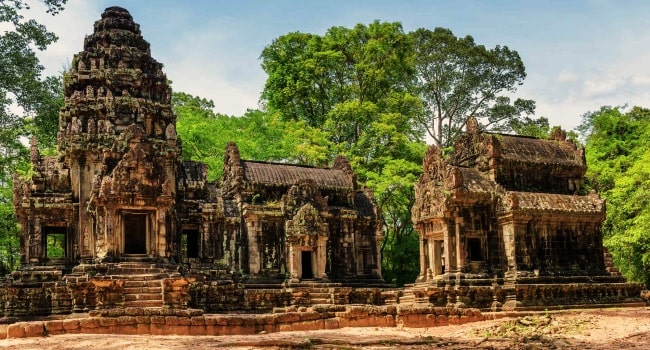
Epic Guide for Thommanon Temple
 Jolie LIEM
Jolie LIEM
 11/01/2026
11/01/2026
Thommanon Temple is a Hindu temple site that's covered in intricate carvings and surrounded by forests in Angkor. The temple is in relatively excellent condition, thanks to extensive restoration work in the 1960s.
It was constructed about the same time as Angkor Wat. The style of architecture is quite evident in the towers and carvings, which are in very good condition. During the rainy season, the dampened sandstone offers great photo opportunities.
Part of the UNESCO World Heritage Site, the complex dates back between the 11th and 12th centuries. It is about 600 metres east of the Victory Gate of Angkor Thom, just opposite Chau Say Tevoda. Even before restoration, Thommanon was in much a better condition than Chau Say Tevoda. Unlike the latter, which was built using wooden beams enclosed in stone, Thommanon Temple's entire structure was made out of stone.
What does Thommanon mean?
Overview of Thommanon Temple
Small, attractive temple in very good condition, built at the same time as Angkor Wat. The Angkor Wat style is most easily seen in the style of the towers and carved devatas. Thommanon seems to stand in conjunction with Chau Say Tevoda across the street but was built decades earlier.
Thommanon is currently in much better condition than Chau Say Tevoda, in part because archaeologists heavily restored it in the 1960's. But even before restoration, Thommanon was in better shape than Chau Say Tevoda due in part to the lack of the stone-enclosed wood beams in Thommanon’s super-structure that were used in Chau Say Tevoda’s construction.
Many of Thommanon’s carvings are in excellent condition. The colors of the age stained sandstone against the jungle are very photogenic, particularly in the wet season.
Below is the glimpse of Thommanon Temple in 360o viewing:
History of Thommanon Temple
Scholars studying the carvings of the devatas in Thommanon have concluded that it was built around the time when work on Angkor Wat was begun. However, there is some disagreement as to the precise date it was built.
Some believe that the distinctive carvings of females, known as devatas, indicate that they were built during the reign of Jayavarman VI (1080–1113 AD), some time at the end of the 11th century. However, there is greater agreement, especially given the scholarly studies, that it was built by Suryavarman II around the time of Angkor Wat and Beng Mealea from 1113 to 1150 AD.
The Vaishnavite cult was adopted in Cambodia by Jayavarman II and his son Jayavarman III. Under these rulers, the shaivite cult was subsumed with the Vaishnavite cult in the temples such as the Thommannon, Beng Mealea, Chau Say Tevoda, Banteay Samre, and Angkor Wat.
Thommanon is directly opposite the Chau Say Tevoda and just 500 metres east of the Victory Gate on the way to Ta Keo. In the 1960s, the temple underwent a full restoration, funded by the École française d'Extrême-Orient (EFEO). French archaeologists restored it and added concrete ceilings.
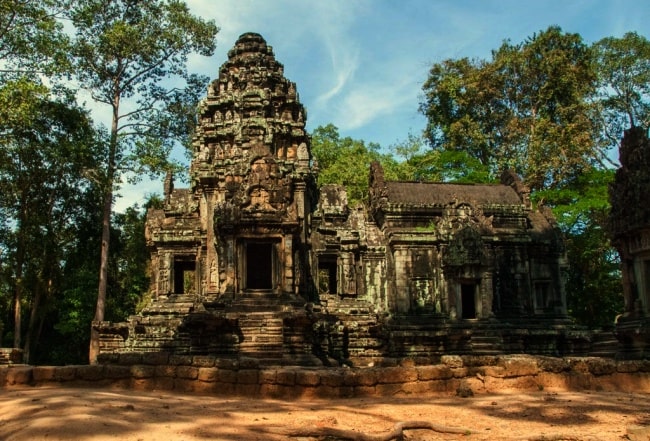
Structure of Thommanon Temple
Thommanon is a single-towered temple with an east-facing central sanctuary, crowned by a prasat, or tower. Access from the east is via a gopura, followed by a mandapa, or antechamber, before arriving at the central sanctuary.
The temple's carvings are very well preserved and the aged sandstone provides a distinct contrast to the surrounding jungle. The architectural style of its tower is akin to the Angkor Wat temple and the Chau Say Tevoda in its vicinity.
Thommanon is better preserved than Chau Say Tevoda, though they are similar in design. The reason for better preservation of Thommanon is attributed to the fact that its superstructure does not have stone-enclosed wood beams.
Thus, adoption of sandstone as the medium for carvings in this temple has made it more advanced in its architectural design vis-à-vis other temples in its vicinity, which were mostly wood-based. All doorways include carved pediments.
The compound walls around the temple have all disappeared, leaving only the entry gates on the east and the west. The central tower is all that remains of the main temple. It is inferred that Thommanon and Chau Say Tevoda were interlinked to the central tower under one large compound with large gates. The independent building separated from the main temple was the library.
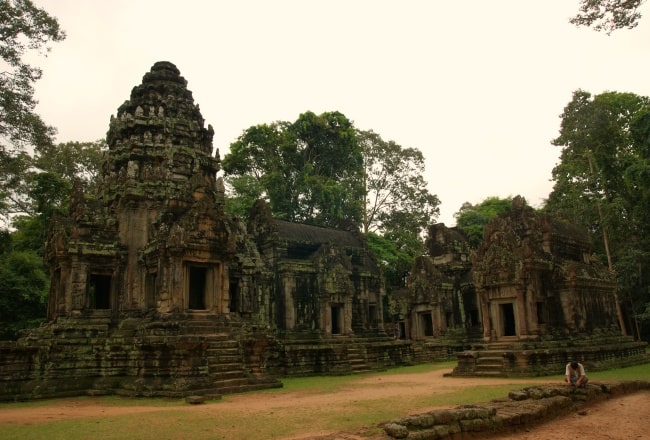
Devatas
Images of devatas, the female divine carved figurines, are seen in profusion here, as in other Khmer temples. They are the centre of attraction in Thommanon. The devatas depict flower crowns, sampots (Cambodian skirts), necklaces, armbands, belts, and ankle bands.
The mudras displayed are complex. The devatas grip the flower very distinctively, holding the ring and middle fingers against the thumb, while the index and small finger are extended. One Angkor researcher calls this position the "devata mudra" and notes it is also prominent at Angkor Wat.
The sampots of the devatas are divided into two types: one is the ancient pleated style, seen in the Bakheng period at Lolei and Phnom Bok (900 AD), and the other is a patterned fabric style with folds and "tail" seen at Angkor Wat.
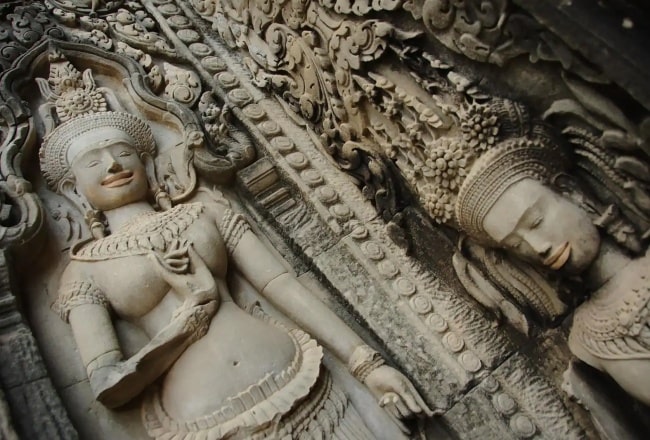
What to see at Thommanon Temple?
Thommanon is a small compound and a flat temple (without upper levels of rooms). It has only one Prasat, with a cruciform ground plan. The core temple structure, consisting of the Prasat tower with a preceding Mandapa hall, connected by am Antarala passageway, is of considerable size and elegant classical Khmer design in sandstone, and it is well preserved.
Gopuram gates in the east and west and a library building in the south east corner are in a good condition, too, after the complex underwent restoration in the 1960s by French archaeologists, who supplemented the broken roof by adding concrete ceilings.
The highly stylized Devata goddesses (often called Apsaras) of the outer walls are of excellent quality. The Devata figurines have flower crowns, necklaces, armbands, belts and ankle bands. They are well-known for their complex mudras, particularly those hands gripping flowers and holding the ring and middle fingers against the thumb.
The Devatas at Thommanon depict two completely different styles of sampot skirts, besides those in the Angkor Wat style others resemble those of much earlier periods.
Superimposed pediments are decorated with reliefs, too. Inside the Mandapa and the Antarala are well preserved lintels above doorways, but not easily to study because of the darkness. With a torch you can see Vishnu on halfbird Garuda and Indra on elephant Airawata.
Other interesting panels show the death of monkey-king Valin, which is a topic of the Ramayana legend, demon-king Ravana shaking Mount Kailash to disturb Shiva's and his followers meditation, Krishna lifting Mount Govardhana in order to protect his followers from Indra's rainstorm.
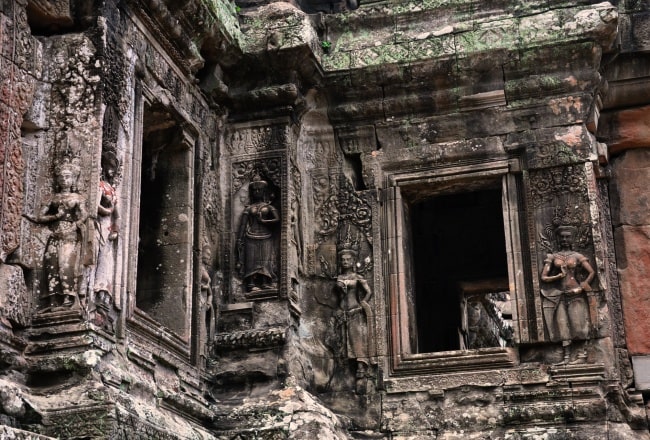
The western Gopuram, at its south side, depicts Shiva meditating (as Mahayogi) and, at the north side, the churning of the milk ocean, and Vishnu on Garuda fighting against an Ashura demon.
Thommanon is often paired with the nearby Chau Say Tevoda just across the Small Circuit road, as both were built by Suryavarman II, and appear almost similar in style.
Preparing for your visit to Thommanon Temple
Temple Facts
- Date: 12th century AD
- Religion: Hinduism
- Built By: Suryavarman II
- Dedicated To: Shiva and Vishnu
- Style: Angkor Wat
- Best Time to Visit: Anytime
- Length of Visit: 15 - 45 minutes
- Temple Pass: Required
Location
Thommanon is located just outside of Angkor Thom‘s eastern Victory Gate. It’s just a few minutes off Victory Way just before you reach the Siem Reap river. It sits directly north of Chau Say Tevoda temple and is only around 100m away from the ancient bridge called Spean Thma.
Check the location of Thommanon on Google Maps below for your reference:
Getting There
If you’re coming from Angkor Thom, then exit the ancient city from the Victory Gate. Take the second left and you’ll see the temple directly in front of you. If you’re coming from Ta Prohm, then head towards Ta Keo temple. Follow the road around to the right and then left over the Siem Reap river. After about 30 or 40m turn right and Thommanon is directly in front of you.
Thommanon Tours
Thommanon is often overlooked on tours, but it is featured on some Small Angkor Circuit Tours. If you’re taking a private tour of the “Big Three” temples (Angkor Wat, Bayon, and Ta Prohm), then you can ask your guide or driver to stop along the way to Ta Prohm after you’ve been to Bayon temple.
Accommodation
As there are no hotels in the Angkor Archaeological Park, most visits will find accommodation in Siem Reap town. There are many hotels of all shapes, sizes and prices. You’ll easily find something to suit both your budget and taste.
Here is our Siem Reap Travel Guide
Why Visit Thommanon?
Thommanon is not as busy as some of the other more popular temples in the area, but it is one which you should make the time to visit. It contains some of the best preserved carvings of devatas anywhere in the Angkor Park.


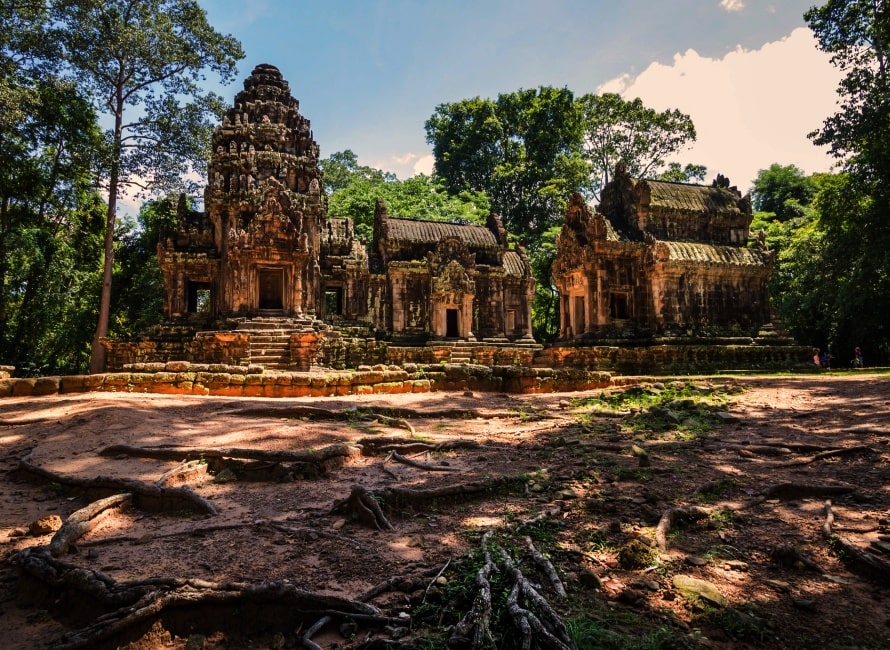
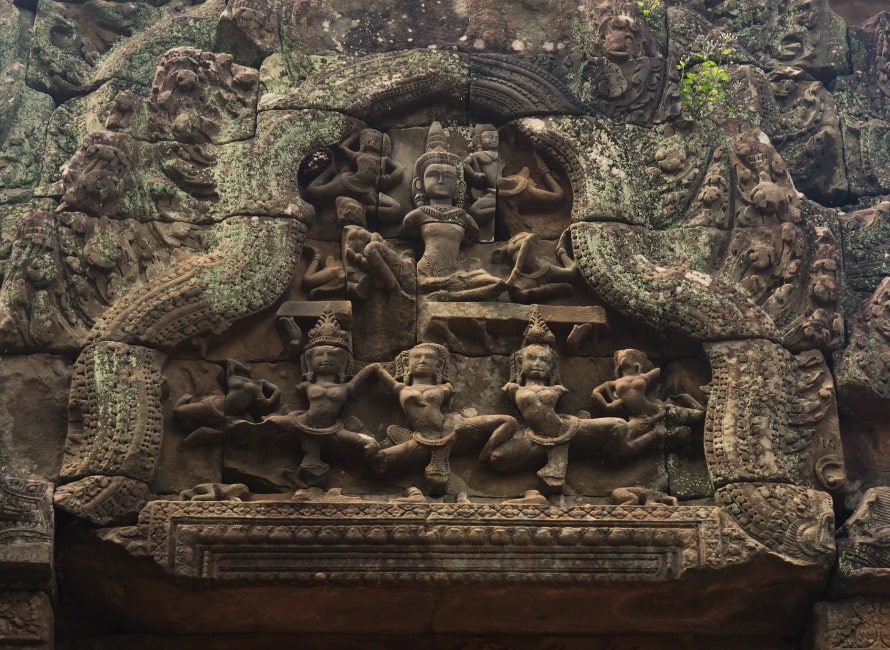
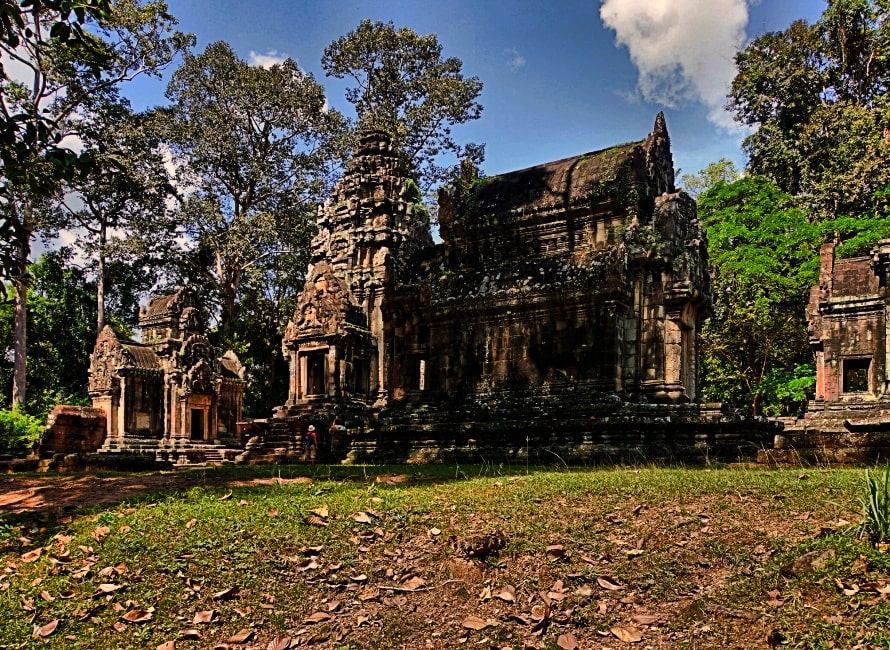
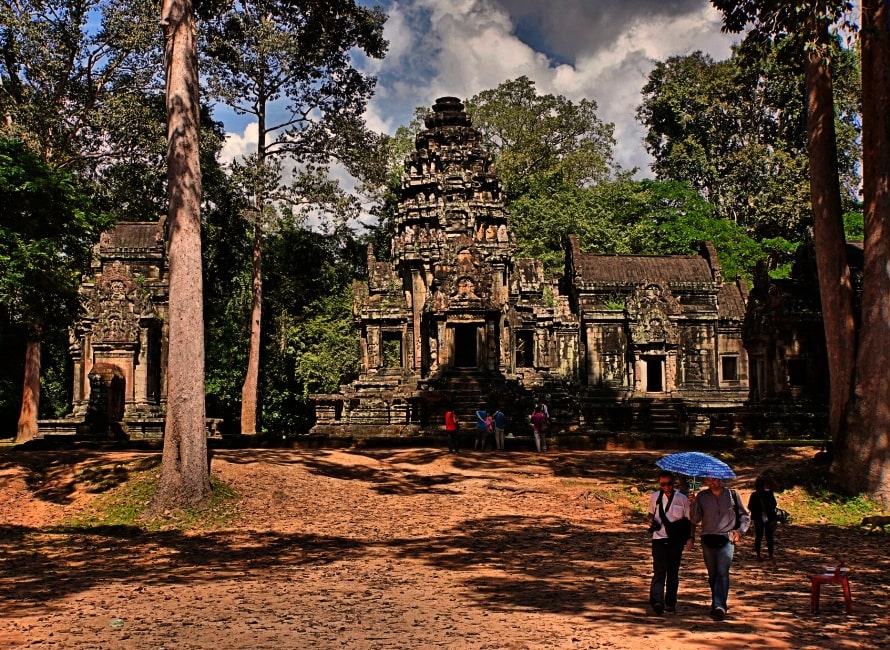

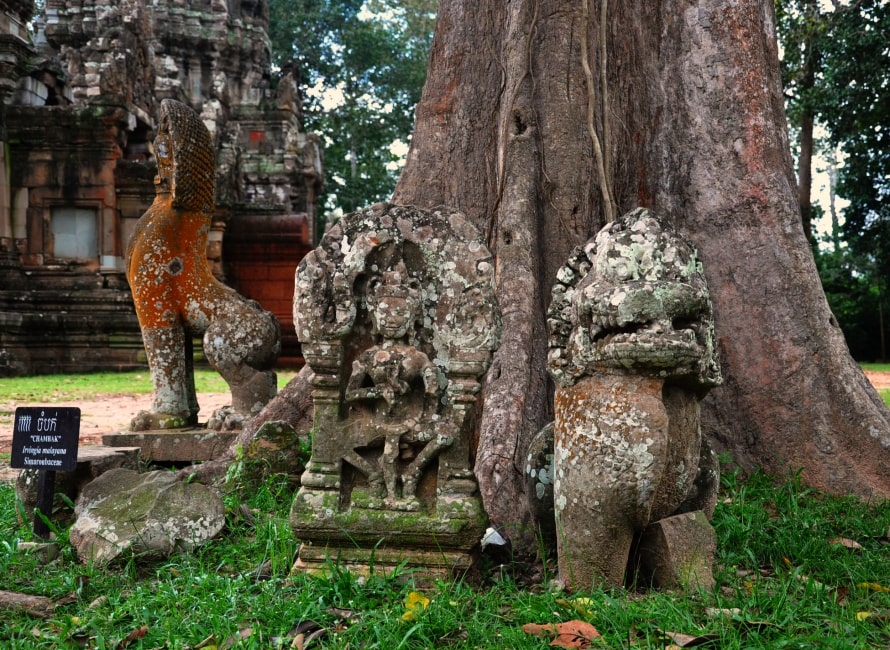
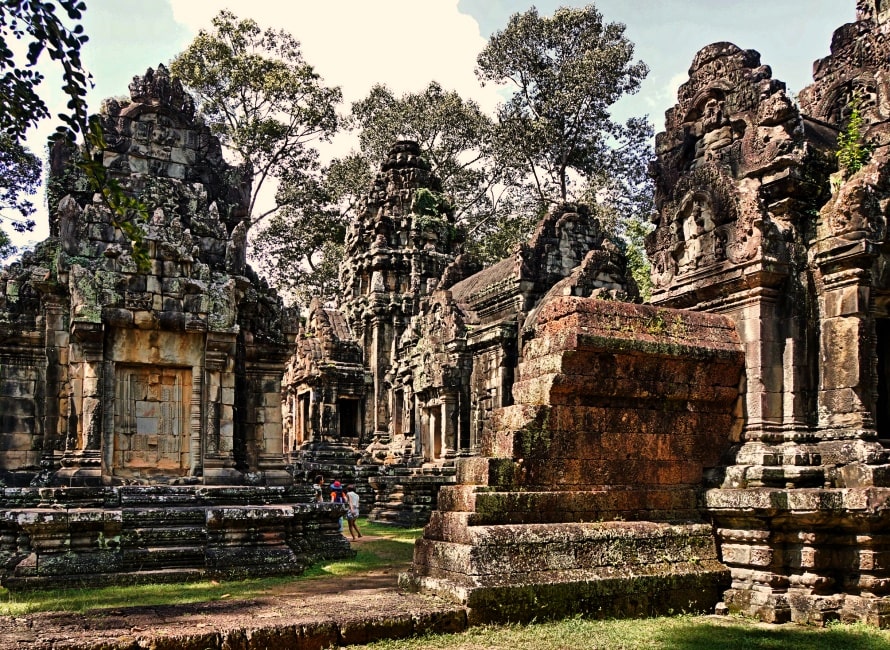
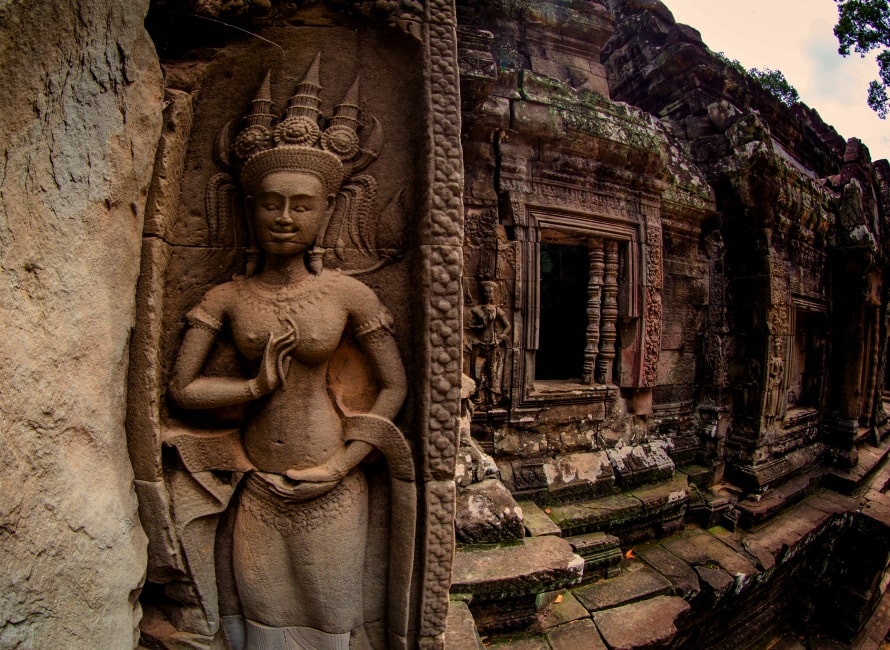
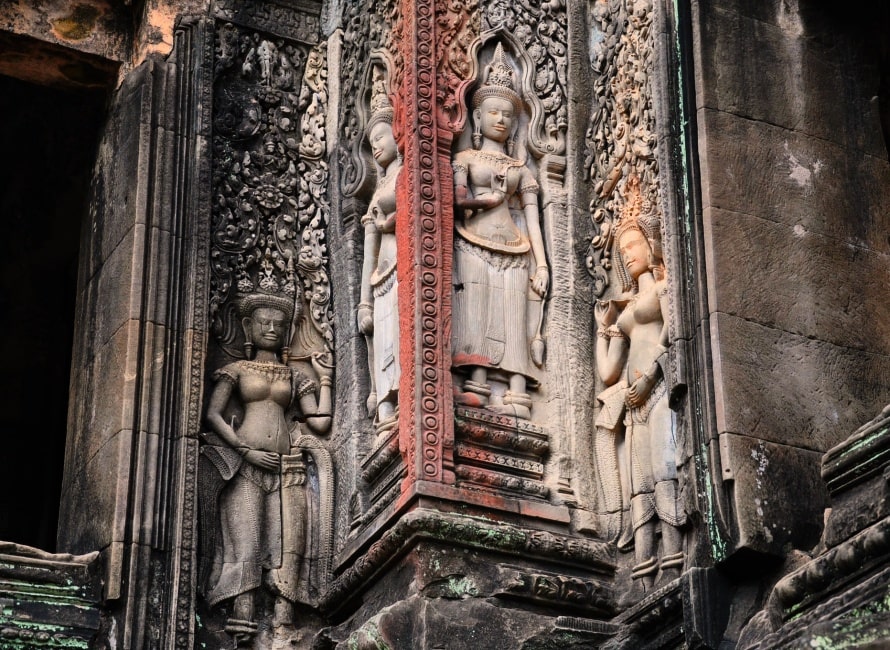




















Jolie LIEMMy name is Jolie, I am a Vietnamese girl growing up in the countryside of Hai Duong, northern Vietnam. Since a little girl, I was always dreaming of exploring the far-away lands, the unseen beauty spots of the world. My dream has been growing bigger and bigger day after day, and I do not miss a chance to make it real. After graduating from the univesity of language in Hanoi, I started the exploration with a travel agency and learning more about travel, especially responsible travel. I love experiencing the different cultures of the different lands and sharing my dream with the whole world. Hope that you love it too!